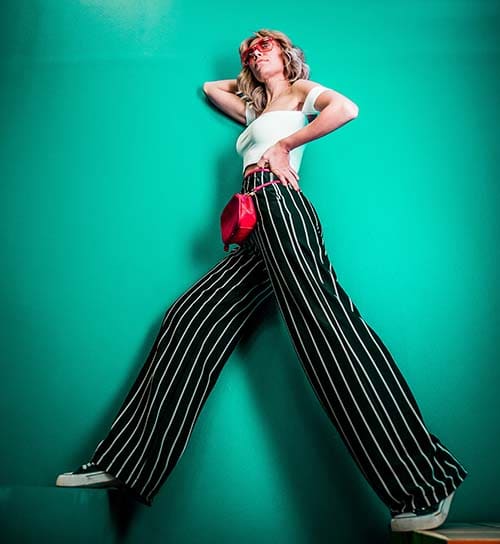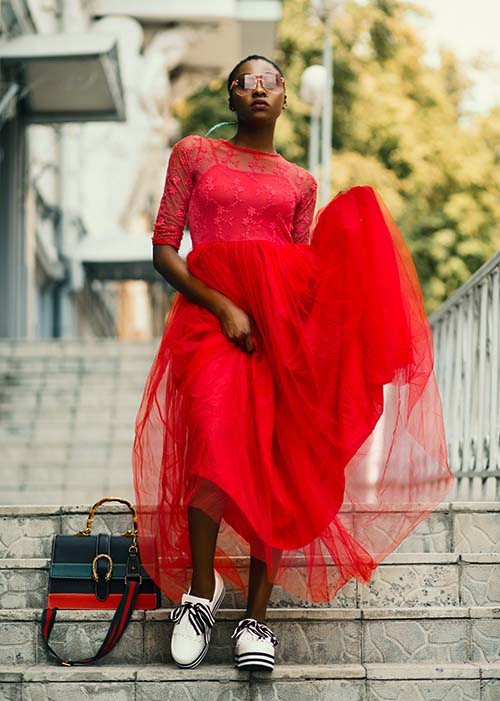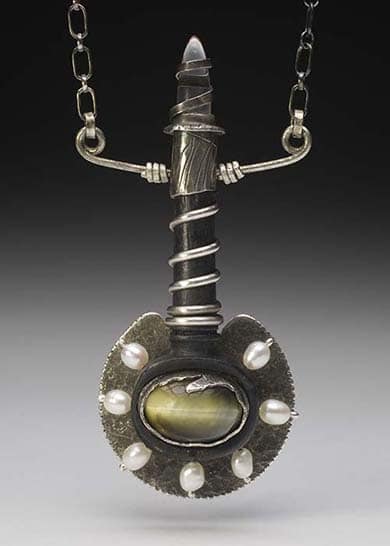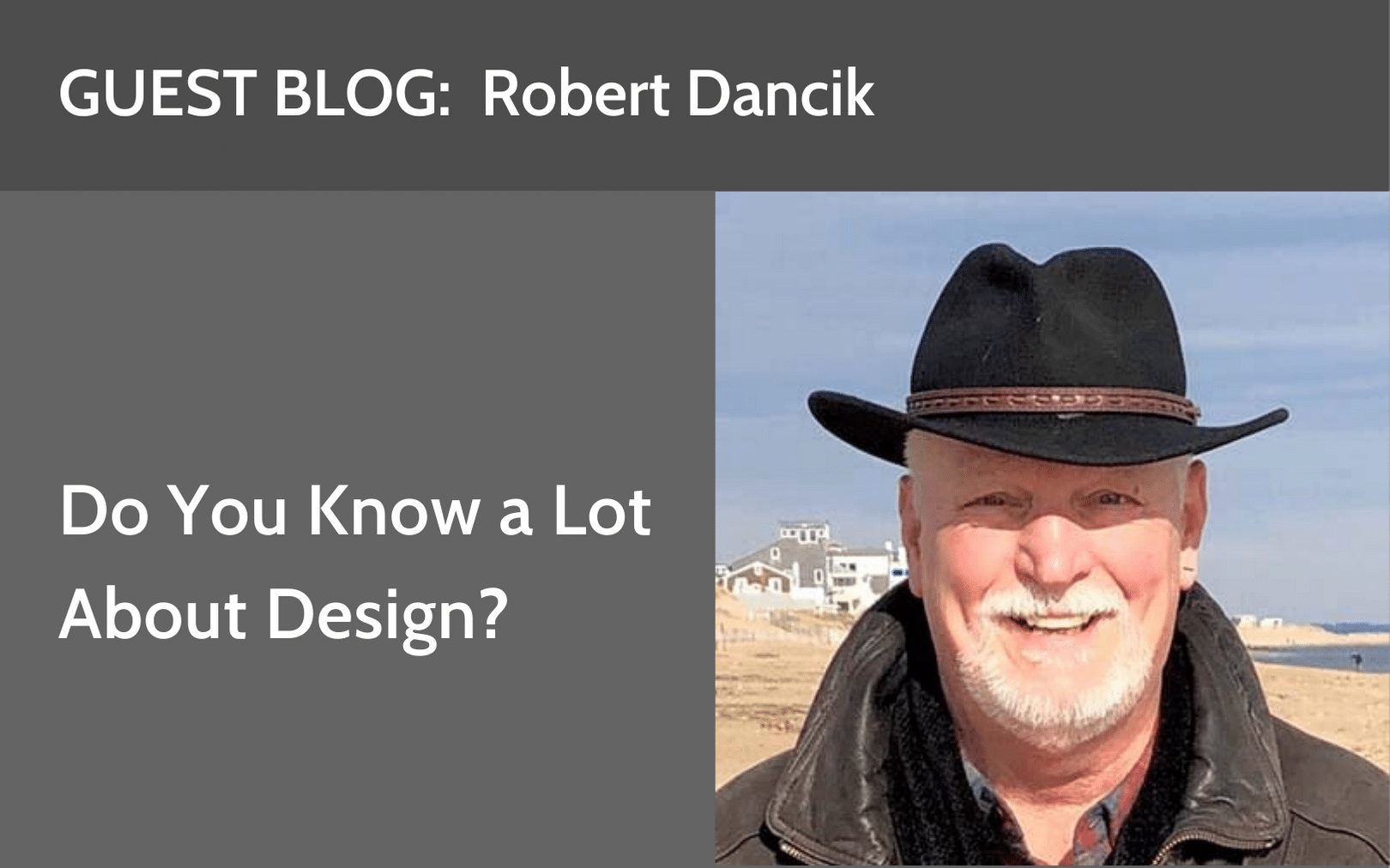Do you know a lot about design? That’s not a rhetorical question. I’d really like you to think about it and also answer the question – out loud and honestly. Do you know a lot about design??
If you answered “yes,” I quite agree, you do. And if you replied “no,” I must, respectfully but ardently, disagree. You do! In fact, I trust you know lots and lots about design.

Photo Credit: Ahmed Carter
Whichever your answer, take a look right now at what you’re wearing (again, not a rhetorical request, please do so). Now think back to when you were deciding what clothes you were going to don for the day. What went through your mind – perhaps the weather, possibly comfort? What factors affected the choices you made for what you are wearing right now? Really – please think about your choices!
Did you try on or consider more than one of the various articles of clothing you have on? When assembling your present ensemble, did you think at all about the color of the _____ (you fill in the blank here: shirt, trousers, skirt, sweater, etc.). Did you consult the mirror (be honest) to see if perhaps your top or trousers were a bit too loose/tight? Is there any sort of pattern in anything you have on? What about a little line of a camisole showing at your neckline (yes – I know about such things, I have a very lovely, very well-dressed wife). How about jewelry? Maybe a pendant, bracelet, watch? Gold, silver, gemstones, leather?
What about the surroundings you were going to be in? Work, play, the gym, a lunch date? What about the tasks at hand for the day and the people you might come in contact with? How did all of these variables effect your selection of the clothes you’re wearing right now – how you were going to look today?
Another idea I’d like you to entertain is what message you are trying to send when choosing the clothing for any given outfit you plan. Now I know that some of you will come back with “just something comfortable.” Even if that’s true (and I have my doubts), the way you dress and what you have on still sends a message to the folks who see you: your viewers.
About this time, you may be wondering “why all the talk about my clothes?” I thought this guy was going to be writing something about design, something I might be able to use in my jewelry making. Well, all this talk about your clothes IS about design, and more specifically about you as a designer: a designer whose knowledge of design is extensive both in time and experience.

Photo Credit: Melody Jacob
My observation over many years of involvement as both designer and teacher of design is that when confronted with all the nomenclature (jargon) presented in the study of design, people often have an almost visceral and fairly negative reaction. So, while I am going to talk about the elements of art and principles of design/composition – PLEASE DON’T RUN AWAY YET – I am going to do so in the context of all the experience with clothing that you are already such an expert in dealing with.
Here goes: the elements of art and principles of design/composition (which may differ a bit from list to list depending on the resource) are:
Elements: line, color, value, space, size, texture, shape (2-dimensional), form (3-dimensional). The shape/form thing is easily confused.
Principles: balance, proportion, contrast, repetition/pattern, emphasis/dominance, harmony/ unity, variation, rhythm/movement. The principles with a slash mark mean the terms are often used interchangeably.
I won’t be going through all of these now with definitions but rather, I’ll be relating them back to your clothing and getting dressed. (For actual definitions and visual examples just google elements of art, principles of design).
For instance, the element of color is fairly straight forward. Perhaps you have a little sliver of red camisole showing under a blue pullover. Maybe then you select a red belt for your black trousers. And just for fun you get a little crazy and wear the sneakers with red laces.
Let’s return to the elements and principles you probably weren’t thinking of (at least not consciously) while putting that outfit together:
· The element of color is evident with the red but then you repeated it with the belt and laces, creating a pattern.
· The red camisole created a nice contrast with the blue pullover as did the pullover with the trousers.
· And even though the red elements are the smallest parts showing, your viewers’ eyes will probably go right to those elements, creating movement as they glance from one to another due to your selection of the color and its placement in the design of your outfit (wearing red lipstick, are you?!).
· Now to your footwear – shoes, boots, slip-ons, laces? Or will it be the knee-length black boots, which are the right proportion?
In each of these decisions you are dealing with the elements and principles. You are also editing your choices as you go and considering your choice, reacting to that choice and comparing the two, three or more of the possibilities. At the same time, you are considering the narrative of your “look” with that outfit.
Now let’s bring in a bit of your making of objects into the conversation, but continue with the clothing analogy. Think about the way you like to work when you are making your jewelry/adornments/objects. No matter what tools, materials, or aesthetic you employ at your bench, those same pesky elements and principles are sitting there with you.
You may like to draw or design before you start making. Maybe you make models or test in less expensive materials. You may also be the person who, when looking for a coat, starts by perusing catalogs, on-line stores, maybe the fashion section of the newspaper. You take a look and decide you like the length of one coat you see, the buttons on another, the collar on yet another and then find a coat like that.

Photo Credit: Karen Maes
Some people say they like to work more “organically” (lots more about that in another post). If you are an organic worker, and don’t much like planning beforehand or do much drawing or modelmaking, you may like to react to the materials as you work. Then, when shopping, you might need to actually go to a brick and mortar store and try that coat on to see how it “feels,” while standing in front of a mirror to assess if it goes with the trousers and shoes you want to pair with it. Just for fun, the next time you look in that mirror maybe think about what you’ve read here about the elements and principles.
While I’ve used clothing as an entrée into the discussion about the elements of art and principles of design/composition, these are just a few examples of how the elements and principles are involved in virtually all the choices you make when it comes to selecting any of the myriad objects in your life.
To wrap-up this initial foray into design and how it applies to all the artwork you’re presently involved in, and work you may be thinking about, there are a couple of ideas to consider as you go forward:

R. Dancik, She Always Hummed In The Key of C
· One is: DON’T change the way you work – that’s not what this is about! Your way of working is yours and it has probably served you well so far. You can play with making an adjustment or two if you like but do so gently and know that you can always go back to what you’re comfortable with.
· DO try to start noticing how you are already considering all of the concepts of the elements and principles in your work and often with great success. However, you can also start noticing that by bringing these concepts to the conscious level when working they may allow you greater understanding of your work and may influence you in decision making as you sally forth in your pursuit of making objects.
My humble hope here is that if nothing else, all this “stuff” about design has given you something to think about. Good/bad, positive/negative, silly/enlightening – whatever the case may be if you’ve taken the time to read to the end here — I thank you for your time and effort and hope too, that someday we have a chance to chat about it. Cheers for now and play well!
By Robert Dancik, Guest Blogger
About Robert Dancik: Robert has been an artist and teacher for more than 30 years. He is the originator of Faux Bone™ and Solid Expressions – Artist’s Concrete, and authored the book Amulets and Talismans: Techniques for Creating Meaningful Jewelry.
Robert teaches workshops worldwide and has work in numerous museums as well as in public and private collections worldwide. His work has been featured in many books, magazines, and other publications. Robert lives in Connecticut, is an avid cook (he didn’t say good) and collector of toys, maps, and compasses.
Find Robert online at www.robertdancik.com, www.fauxbone.com, and www.thestudioeye.com.
